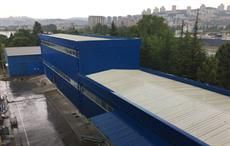
In this way, almost all the thermal energy produced in the combustion process will be recovered and reused. In fact, in a traditional thermoelectric plant, only about 35 per cent of the fuel is transformed into electricity. The remaining 65 per cent is not used and is instead released into the environment in the form of heat, known as thermal energy. Klopman’s new plant has been designed to modulate both the electricity supply and the thermal energy supply, to cope with changes in demand from the facility.
The new plant will allow a 58.9 per cent reduction in carbon monoxide, 72.1 per cent nitrogen oxide (NOx) and 59.5 per cent of dust, as well as achieving savings of around 4500 tonnes of CO2 a year. These important results are fully in line with the emissions reduction and air quality improvement targets set by the regional plan.
"The brand-new cogeneration plant represents an important investment from an environmental point of view. It makes us particularly proud and represents our latest action addressing the issue of sustainability, a Klopman priority for years," said Alfonso Marra, CEO of Klopman. "Attention to the environment is one of our distinctive characteristics visible throughout the production process. With the new power plant, even the production of energy will meet the most advanced criteria of efficiency and environmental sustainability, a mark of respect for the territory that hosts us. Special thanks go to the provincial institution, to the municipality of Frosinone and to all the other institutions that have been involved in the process that has led, thanks to their sensitivity and technical ability, to this important result."
The installation of a cogeneration plant has positive effects on the entire territory, with regard to environmental impact, through the reduction of fuel consumption and emissions, and for the electrical distribution system, through lower transmission losses and distribution by building the system at the company’s premises. (RR)
Fibre2Fashion News Desk – India

